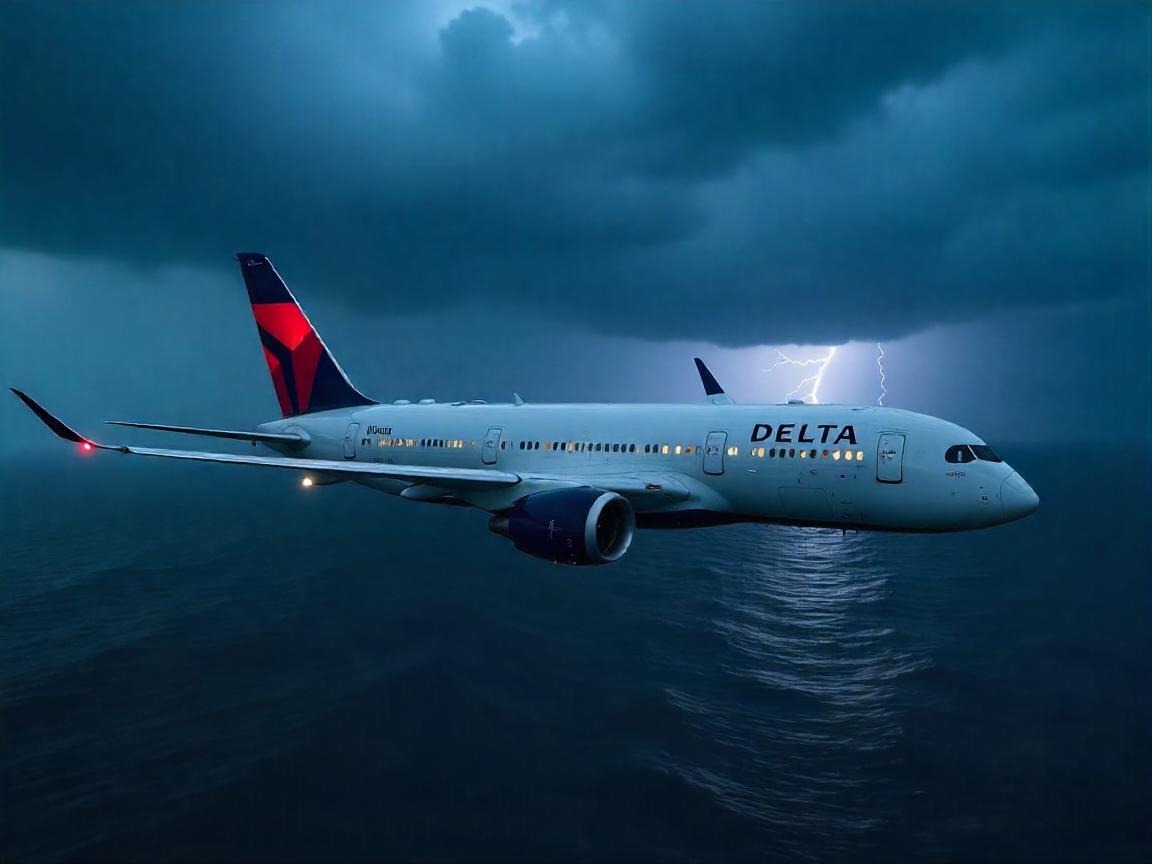As convenient as air travel is, it remains a delicate and intricate blend of technology, decision-making from human beings, and real-time planning. The circumstances involving the Delta flight DL275 serve as a very clear reminder of how these elements often need to be shored up – or adapted in this case – in a timely manner to respond to unexpected challenges.
Delta Flight DL275 Diverted LAX was supposed to be a usual non-stop flight from Detroit Metropolitan Airport to Tokyo’s Haneda International Airport, but something unexpected happened mid-flight which led the plane to land at Los Angeles International Airport (LAX) instead. This story has piqued the interest of aviation enthusiasts, the passengers on board, and the general public, provoking thoughts on modern day air travel, emergency air travel response systems, and the way the airline deals with such events.
What Happened This Time
Flight Info
- By Airline: Delta Airlines DL275
- To And From: Depart from Detroit (DTW) and arrive at Tokyo Haneda (HND)
- Type Of Aircraft: Airbus A350-900
- Date Of Flight: [Insert relevant date of event]
- Current Status: Mid flight current status – diverted to land at LAX
Chronology
On schedule Delta DL275 out of Detroit was filled to capacity with passengers, ready for the long haul flight over the pacific. After a few hours of the flight, the crew determined the need for diversion and subsequently international flight to Los Angeles International Airport. This is for precautionary reasons which Delta is currently clarifying.
LAX was the final stopping point for this flight and all passengers were assisted with further travel arrangements.
What Caused DL275 To be Diverted
The information above has not been verified by Delta Air Lines as the cause of diversion has not been confirmed. Nonetheless, the following possibilities can usually explain the reason for emergency diversions of international flights:
- Technical difficulties
- Medical problems involving a passenger
- Issues with cabin air pressure
- Obstructions due to the route’s airspace or weather conditions.
In this particular case, many initial reports are now suggesting that the cause was precautionary and not alarming. Such reports instead showed a good side on strict protocols followed by Delta.
The Modern Flight Experience: Logistics in Action
“DELTALINE 275 TO LAS PICKED UP A FLIGHT PLAN TO DALLAS”
The quote perfectly highlights how the world of aviation is continuously shifting. Every single international flight has a multitude of checks and systems that must be coordinated and working smoothly – from weather conditions, engine checks, navigation, fuel requirements, and the people involved. The system is quite seamless but can adapt to changes like a sensor alert or passenger health issue.
In DL275’s situation, the pilots and airline demonstrated flexibility, utilizing ideal airports, fuel data, and captain off-duty schedules to resolve the pressing issue. This is modern day aviation and the not-so-technical aspects of aviation in control are equally exercising the autonomy given by policies.
Impact on Passengers
Passenger Experience
As is customary with any major flight change, Delta automatically rerouted or rescheduled a majority of the passengers on board with the standard travel assistance, support and with Delta. As always, any change comes hand in hand with a serving of inconvenience but depends greatly on the airline and in this case Delta’s top priority is safety.
Delta did apologize for the inconvenienced travel but assured that protocols were put in place to address minimal disruption for all other impacted passengers.
Hotel and Meal Vouchers
Unsurprisingly, Delta was reported to be issuing overnight accommodation along with meal vouchers to passengers who could no longer travel due to time/delay issues.
Different Ways to Fly
Travelers were switched to:
- Later Delta flights from LAX to Tokyo
- Partner airline routes
- Next-day flights from Detroit if needed
What They Said Officially
As reported, Delta Airlines said in a short statement:
“Out of an abundance of caution, Delta Flight DL275 Diverted LAX was diverted to Los Angeles International Airport. We sincerely apologize for the delay and appreciate our customers’ patience as we work to get them to their final destination safely.”
Delta seemed to take pro-safety disruption measures by prioritizing punctuality.
FAQs: Understanding Flight Diversions Like DL275
Q: How frequently do international flights get diverted?
A: Although not frequent, diversions do occur often (for safety reasons). They are a normal aspect of aviation contingency planning, impacting less than 1% of all commercial flights.
Q: Is a diversion like this one classified as an emergency?
A: Not all incidents are treated as emergencies. In the case of DL275, the diversion seems to be precautionary, which means it was managed without any significant complications.
Q: Why choose LAX instead of another airport?
A: Los Angeles airport was a suitable diversion because of:
- Sufficient runway length for an A350.
- Delta’s operational presence.
- Customs and immigration facilities.
- Medical/emergency services.
Q: Do passengers receive compensation in the event of a diversion?
A: Diverse triggers changes and there are different ways policies may treat travelers but for most issues like last minute overnight stays, changes or connection delays airlines compensate through meals, hotels, and even partial refunds or travel credits issued. Temporary rebooking also falls under these conditions.
Q: What happens after landing?
A: Ground crews along with servicing personnel conduct an inspection which determines if the aircraft can be put back into service straight away, or if it has to be grounded until repairs are done.
Lessons from the DL275 Flight Change
The saga of Delta Flight DL275 is a story we all can learn a lesson from. It also is a reminder of the dual balance between technology and human resource skills in aviation.
In summary here are the main points:
- Aviation is proactive and not reactive. Precautionary landings are response actions, part of avSmart planning.
- Passenger care matters. Delta’s response, although brief, featured country-specific responses.
- Transparency and communication during the interruptions goes a long way, but trust shall always be maintained.
Conclusion
While speed is important in aviation, to land an aircraft slower is more critical than speed. Delta Flight DL275 may have failed to make it to Tokyo on schedule, but surely, all the passengers were safely on the ground.
These childlike moments surrounded by complex systems to connect the world highlight the reason-bound aviation industries systems and humans behind the controls make everything operate seamlessly.



